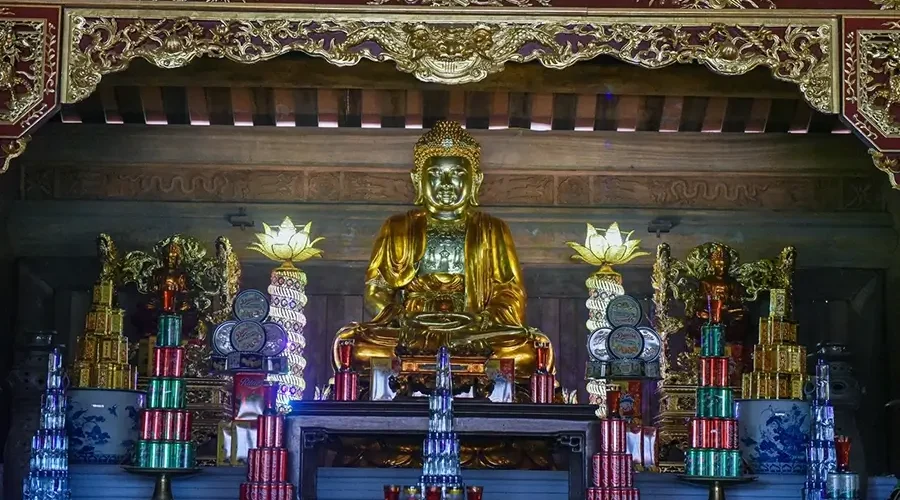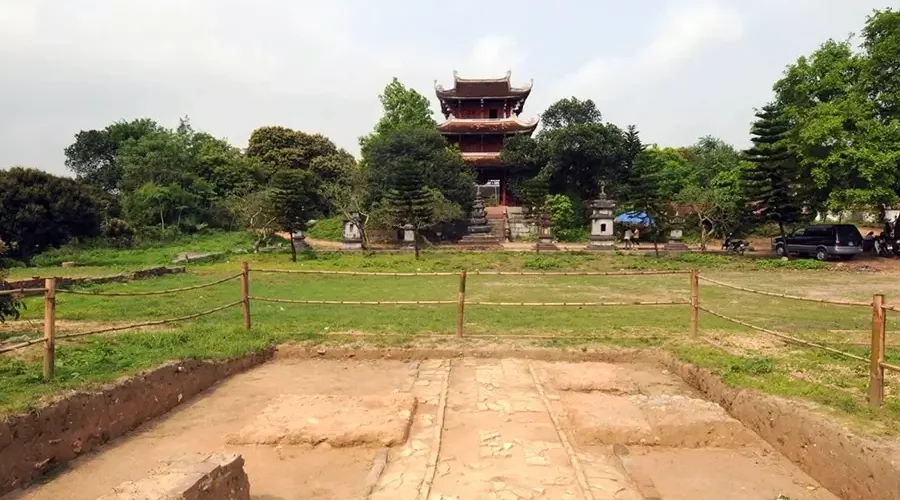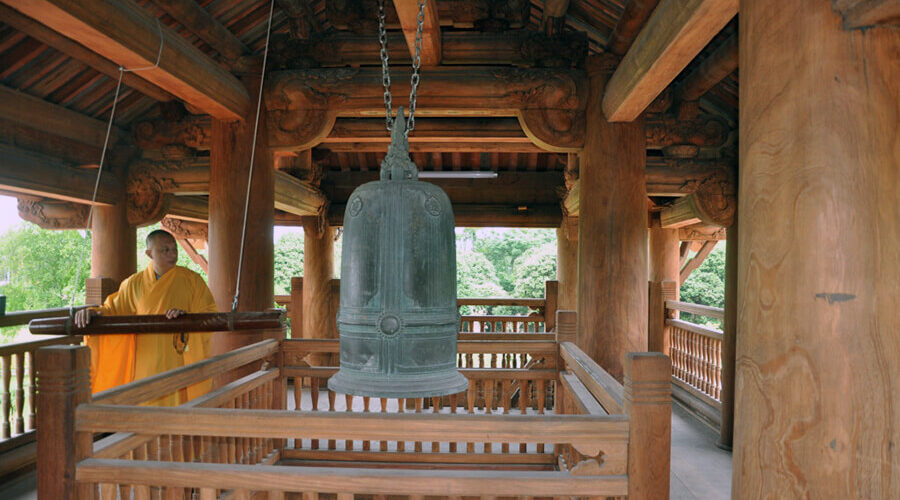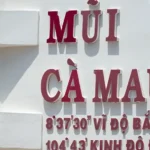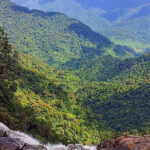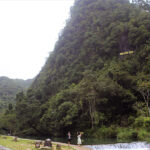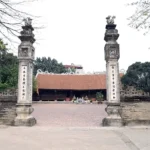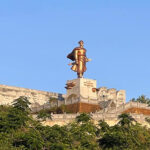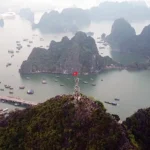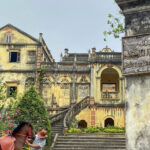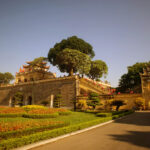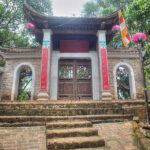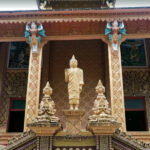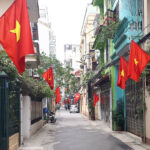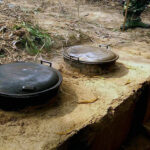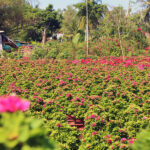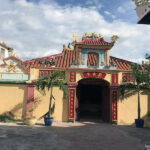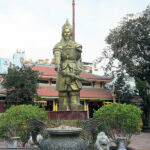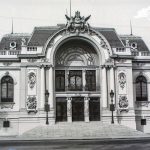After thousands of years with many ups and downs of time and history, Quynh Lam Pagoda – the pagoda that was once considered the first ancient relic of the country still retains its historical and cultural value.
The first Buddhist Academy
The Quynh Lam Pagoda stands on the hill in the village of Trang An Commune, Dong Trieu Town, 83km from Halong Bay city. Before the pagoda is a great lake, while the three remaining sides are surrounded by hills and mountains. The pagoda was built at the end of the Ly Dynasty and has been restored many times. Quynh Lam Pagoda developed into the main centre of Buddhism for the entire country.

In the 14th century, it became an even more important Buddhist centre due to the activities of the monk Phap Loa, a second generation member of the Truc Lam Buddhist sect. The Zen master expanded and built Quynh Lam Pagoda to become a major Buddhist center of the time, where major Buddhist events of the country were held in the early 14th century. In 1314, he built 33 Buddhist shrines, a sutra storage tower… It was during this period on the basis of the old Quynh Lam Pagoda that in 1316 Phap Loa established “Quynh Lam Institute” – the first Buddhist academy in Vietnam to be born from here.

The pagoda was the centre for sacred books and for preaching Buddhism as well as training for future pagoda wardens. Many associations famous in Vietnamese literature and history were organised here. Together with Hoa Yen, Long Dong and Ngoa Van pagodas, Quynh Lam and the system of satellite pagodas such as Ho Thien, Thanh Mai… turned the area into the center of Vietnamese Buddhism under the Tran Dynasty.
Quynh Lam Pagoda – Famous spiritual destination in Quang Ninh
Quynh Lam Pagoda was built by Zen master Nguyen Minh Khong (1128 – 1138). He cast a bronze statue of Maitreya Buddha in 20m high. This Buddha statue, along with Bao Thien tower (Sung Khanh pagoda, Hanoi), Quy Dien bell (One Pillar pagoda, Hanoi) and Pho Minh cauldron (Pho Minh pagoda, Nam Dinh) – are the four pinnacles of bronze casting art, ranked in the group of national treasures “4 largest objects of An Nam” of the Vietnamese people in the 12th century. Among them, the Buddha Maitreya statue of Quynh Lam pagoda is in the top position.

Zen master Nguyen Minh Khong also erected a large stone stele 2.5 m high, 1.5 m wide with soft, curving dragon patterns. This is one of the largest remaining stele of the Ly dynasty. The stele’s forehead is decorated with a pair of dragons playing with fireballs, the border is decorated with dragons following each other in a long strip, the side is also decorated with dragons curled up in squares with sophisticated lines.

Over time, the pagoda became ruins in the mid-20th century. Today, the pagoda has just been restored again. Currently, the pagoda have became one of the largest wooden pagodas in the Northern region, built from more than 1,500m³ of ironwood, rebuilt on the foundation of the old pagoda, with traditional materials, with continuity and selection.

The outermost large hall is the main hall, in addition to many large wooden pillars, there are also two very precious wood pillars with a diameter of more than 100cm, with a very pleasant natural fragrance. The Maitreya Buddha Hall is located in the middle, worshiping the “Three Buddha”. The Luu Ly Hall is located at the back. The highlight of this hall is the jade Buddha statue of Sakyamuni weighing about 3.5 tons, 2.2m high, donated by Vingroup Corporation with a value of about 20 billion VND.
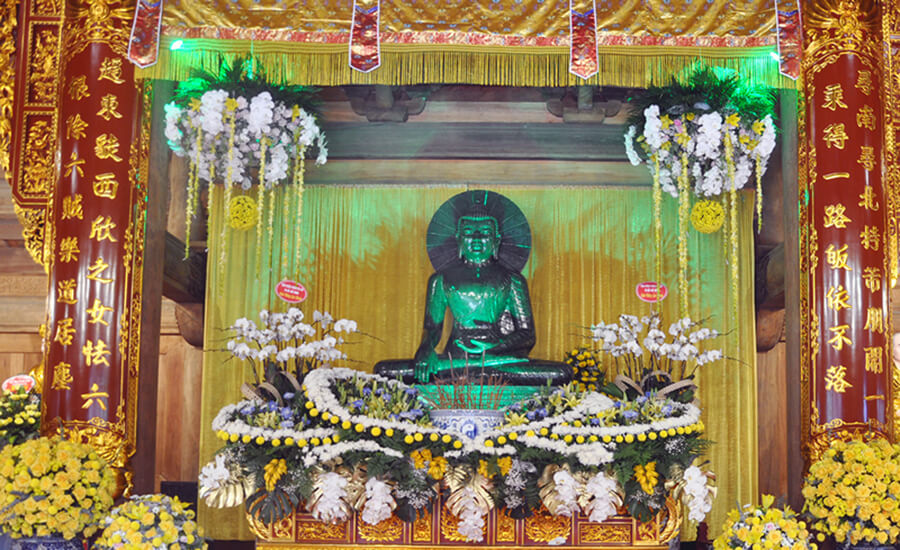
In particular, the large bronze bell hanging here is 200 years old, cast during the restoration and renovation of the pagoda during the Nguyen Dynasty.

With a long history, Quynh Lam Pagoda preserves the names and merits of many monks through the tomb towers still scattered in the pagoda garden. Notably, there is the ancient tower built by Zen Master Phap Loa, to enshrine the relics of Emperor Tran Nhan Tong who later became a monk and tomb tower of Zen Master Chan Nguyen, who had great contributions in the restoration of the pagoda during the Le Trung Hung period. This is also the largest remaining tower in the tower garden.

Around the temple garden, visitors can admire the ancient relics of the temple that remain, giving visitors more emotions. The most are the stone bases and steps from the Ly, Tran, and Le dynasties, including two stone mills that are part of the nine-grade lotus pedestal in Quynh Lam and a very large lotus pedestal from the Le Trung Hung period…
Quynh Lam pagoda, past and present, regardless of the period, is still a famous place in the East of Vietnam, bringing a special experience to visitors every time they come back.
Source: collected by An
Follow us for the best deal with Vietnam package tours and visa services!


